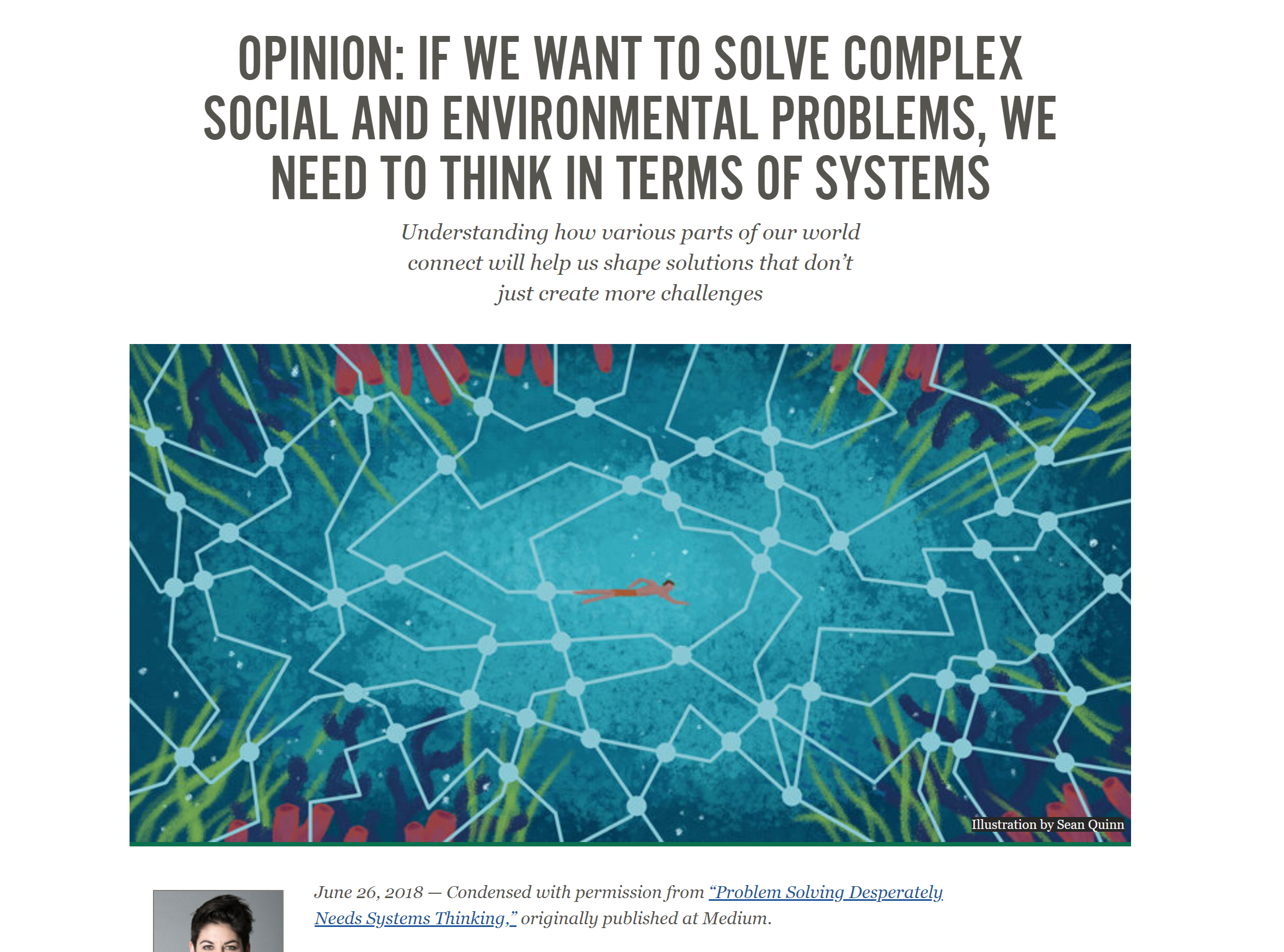Ensia: If we want to solve complex social and environmental problems, we need to think in terms of systems

Exert from Opinion published in Ensia
Most of us are taught, from a young age, that in order to solve a problem, we simply need to break it down to its core components and solve for x. We learn science experiments that have an aim, method and outcome, a linear process from problem to solution. We are socialized to respond to reward and punishment and, by the time we have graduated from 15 to 20-plus years of institutionalized education, we have trained our brains to think in clear, ordered and, yes, very linear ways.
The problem with this is that the world is not linear. While life may be marked by a start and an end, it is most certainly not a straight ordered line; it is a chaotic mess of experiences that make and define our understanding of the world. In reality, everything is interconnected. Problems are connected to many other elements within dynamic systems. As a result, treating just one symptom can lead to burden shifting and often unintended consequences.
If we want to overcome the systemic issues behind today’s problems, we need to change the thinking that led to them. The good news is that undoing linear and ridged thinking is pretty easy. Embracing a systems approach can help us evolve problems into solutions.
The Case for Systems Thinking
MIT senior lecturer and author Peter Senge published a great book in 1990 called The Fifth Discipline. In it, he makes a case for why we need systems thinking:
“From an early age we are taught to break apart problems, to fragment the world. This apparently makes complex tasks and subjects more manageable, but we pay a hidden, enormous price. We can no longer see the consequences of our actions: we lose our intrinsic sense of connection to a larger whole.”
Problems never exist in isolation; they are always surrounded by other problems.From the hypothesis-to-outcome structure of scientific investigations, through to the hyper-structured and inflexible departments of government , we have designed systems of silos that don’t connect to the bigger picture. These isolated systems create very linear perspectives of problems and limited approaches to solving them.
Here’s the thing: Problems never exist in isolation; they are always surrounded by other problems.
As renowned environmental scientist Donella Meadows put it: “Let’s face it. The universe is messy. It is nonlinear, turbulent, and dynamic. It spends its time in transient behavior on its way to somewhere else, not in mathematically neat equilibria. It self-organizes and evolves. It creates diversity and uniformity. That’s what makes the world interesting, that’s what makes it beautiful, and that’s what makes it work.”
If we really want to start to address the highly complex, often chaotic and incredibly urgent social and environmental issues at play in the world around us, we must overcome the reductionist perspective and build thinking and doing systems that work for all.
A systems approach is an incredibly powerful tool for addressing problems. Thankfully, humans naturally have a curious and intuitive understanding of complex systems. So, it’s really not that hard to rewire our thinking codes from linear to expanded thinking.
Read the full article here >
